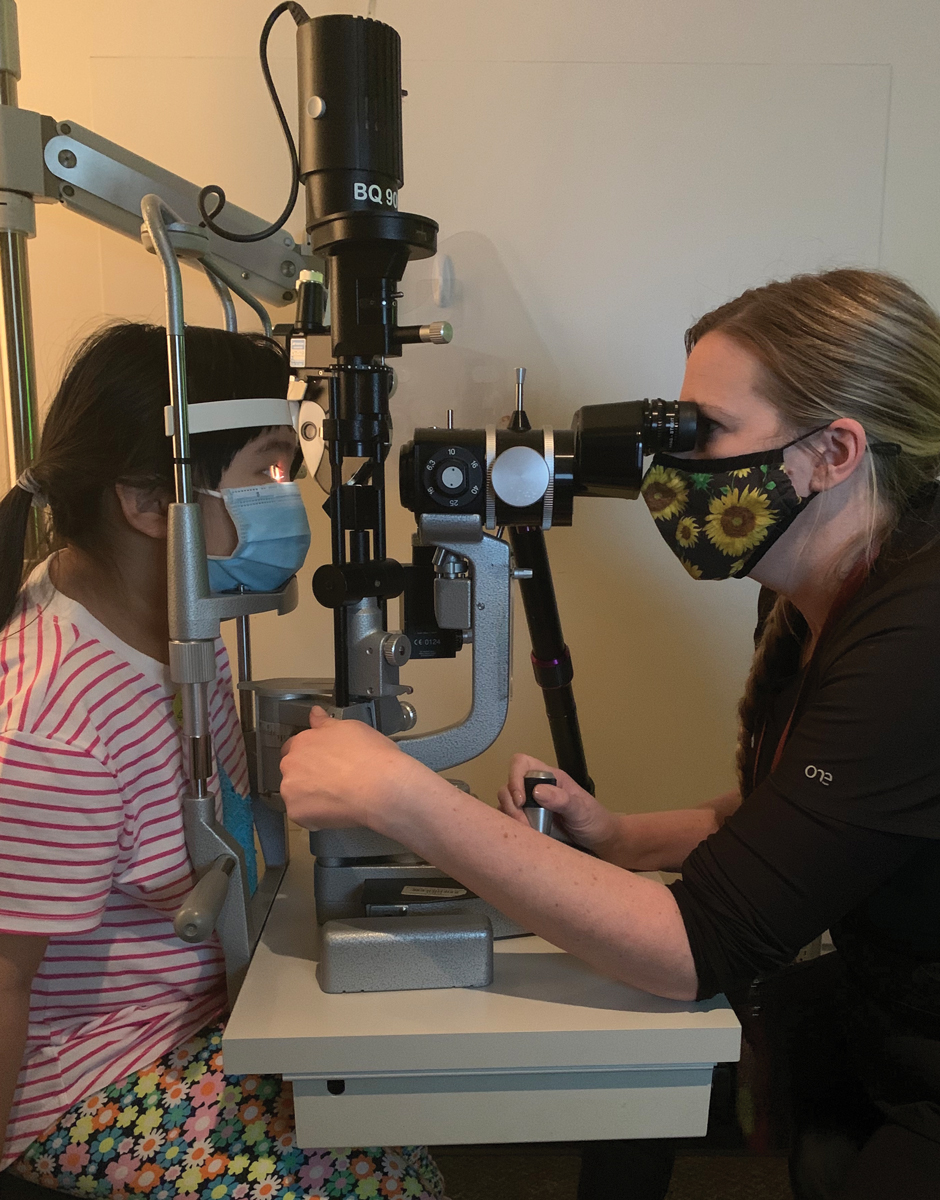 |
|
Use of 0.05% atropine had significantly lower two-year cumulative myopia incidence and percentage of patients with fast myopic shift. Photo: Maria K. Walker, OD, MS. Click image to enlarge. |
Low-concentration (0.01% to 0.05%) atropine can reduce myopia progression, but studies of 0.01% atropine have produced inconsistent findings. The Low-Concentration Atropine for Myopia Prevention (LAMP2) trial was conducted to assess the efficacy of low-concentration atropine in delaying myopia onset among children. It found that, among children four to nine years old without myopia, nightly use of 0.05% atropine eye drops compared with placebo resulted in a significantly lower incidence of myopia and lower percentage of participants with fast myopic shift at two years.1
This randomized, placebo-controlled, double-masked trial conducted at the Chinese University of Hong Kong Eye Centre enrolled 474 nonmyopic children between the ages of four and nine (mean age: 6.8, 50% female) with cycloplegic spherical equivalent between +1.00D to 0.00D and astigmatism less than -1.00D. They were assigned at random to the 0.05% atropine (n = 160), 0.01% atropine (n = 159) and placebo (n = 155) groups and had eye drops applied once nightly in both eyes over two years.
Of the 474 randomized patients, 353 (74.5%) completed the trial. The two-year cumulative incidences of myopia in the 0.05% atropine, 0.01% atropine and placebo groups were 28.4%, 45.9% and 53.0%, respectively, and the percentages of participants with fast myopic shift at two years were 25.0%, 45.1% and 53.9%, respectively. Compared with the placebo group, the 0.05% atropine group had a significantly lower two-year cumulative myopia incidence (difference: 24.6%) and percentage of patients with fast myopic shift (difference: 28.9%). Compared with the 0.01% atropine group, the 0.05% atropine group had a significantly lower two-year cumulative myopia incidence (difference: 17.5%) and percentage of patients with fast myopic shift (difference: 20.1%). The 0.01% atropine and placebo groups were not significantly different in two-year cumulative myopia incidence or percentage of patients with fast myopic shift.
“In this study, 0.01% atropine did not achieve a statistically significant difference compared with placebo,” the study authors wrote in their paper, published in JAMA. “This result suggests that the concentration of 0.01% atropine might not be strong enough to achieve sufficient treatment effects.”
Photophobia was the most common adverse event and was reported by 12.9% of participants in the 0.05% atropine group, 18.9% in the 0.01% atropine group and 12.2% in the placebo group in the second year.
“Nevertheless, this study provides evidence for atropine as an additional strategy for delaying myopia onset beyond increasing time spent outdoors,” the authors wrote. “Although increasing outdoor time offers an effective approach for general populations of children, the addition of low-concentration atropine could be considered for children at high risk of developing myopia.”1
A commentary also published in JAMA noted, “It is not yet known whether delaying the onset of myopia will reduce the final degree of myopia as an adult or whether it simply postpones the typical myopia progression to later years and thus does not decrease the long-term risk associated with higher degrees of myopia.”
“It is also unknown whether decreasing the myopic shift in refractive error and eye growth by initiating treatment prior to myopia onset amplifies the benefit or whether a similar reduction can be achieved by initiating treatment early after onset,” the commentary authors also stated. “Answering these questions will require longer follow-up.”2
“The original LAMP study looked at various concentrations of low-dose atropine including 0.01% and 0.05% in myopic children and found that 0.01% did not significantly slow eye growth,” David A. Berntsen, OD, PhD, co-author of the commentary says. “Based on these findings, many have been recommending concentrations greater than 0.01% (up to 0.05%) for slowing myopia progression.” The LAMP2 results, he says, add further support for that approach.
Another commentary that was published in JAMA Ophthamology highlighted that certain questions remain to be answered, such as:
● How early should atropine treatment be initiated? On the other hand, is there an age at which it is too late for atropine treatment to be beneficial?
● How long should treatment be continued to prevent myopia?
● Are these findings applicable to non-Asian populations?
These authors pointed out that if atropine does receive FDA approval for myopia treatment, “Widespread administration of atropine to prevent myopia in children should not be recommended indiscriminately since children with hyperopia may be harmed if atropine interferes with emmetropization.”3
“There is one US-based large-scale clinical trial conducted by Vyluma (the CHAMP study) that recently in a press release reported that 0.01% did slow eye growth in myopic children,” Dr. Berntsen says. “The difference between the results in Asia and the US could potentially be due to differences in the study population or drug formulation.”
According to him, there are other US-based trials in progress that will hopefully soon shed additional light on the conflicting reports involving the effect of 0.01% atropine on eye growth in myopic children.
1. Yam JC, Zhang XJ, Zhang Y, et al. Effect of low-concentration atropine eyedrops vs. placebo on myopia incidence in children: the LAMP2 randomized clinical trial. JAMA Ophthalmol. 2023;329(6):472-81. 2. Berntsen DA, Walline JJ. Delaying the onset of nearsightedness. JAMA Ophthalmol. 2023;329(6):465-6. 3. Musch DC, Archer SM. Can we prevent or delay the onset of myopia? JAMA Ophthalmol. February 14, 2023. [Epub ahead of print]. |


